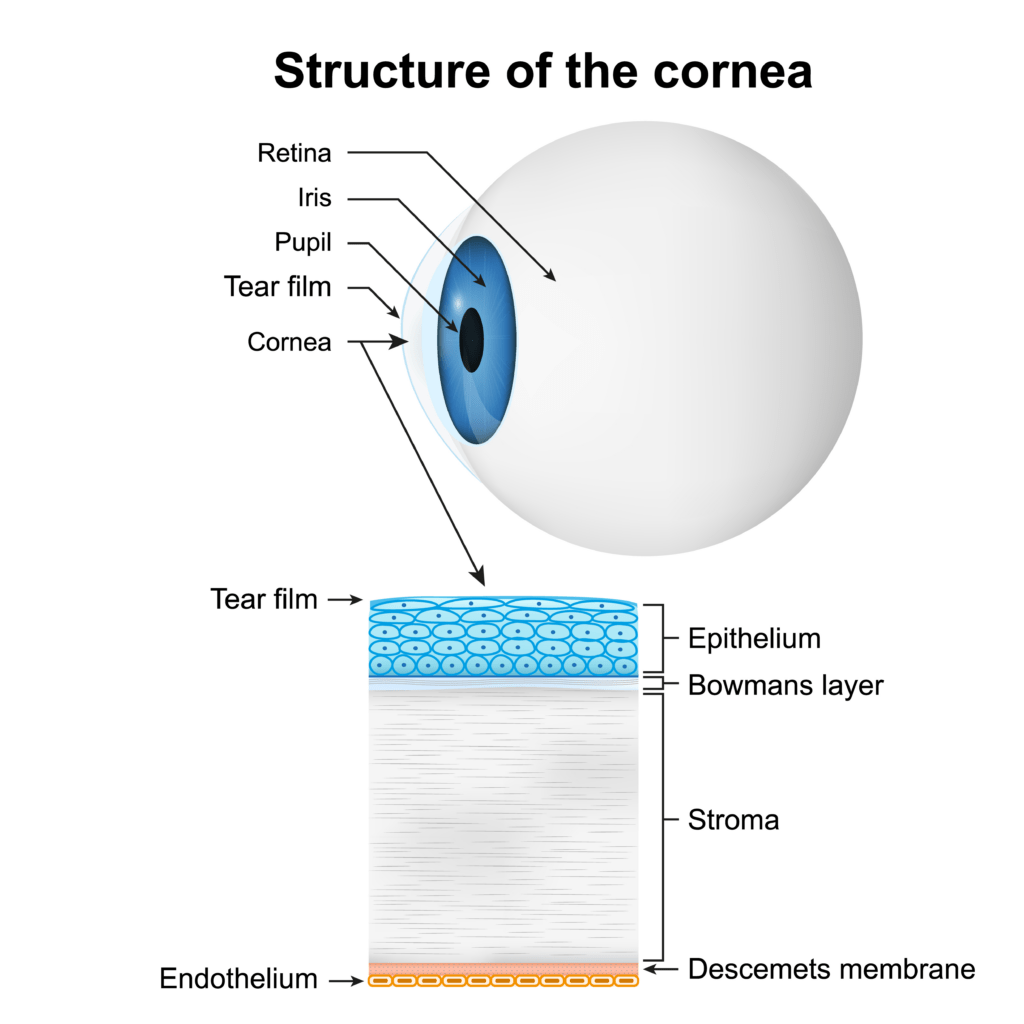Corneal Conditions
Your cornea is the thin outer layer of your eye that protects the eye from foreign debris. The shape of the cornea is also responsible for how well you can see clearly; the shape determines how light entering your eyes will focus in front of, behind or directly on the retina (the back of the eye).
5 Corneal Layers
- Epithelium (outer layer): eye protection and surface to absorb nutrients and oxygen from tears
- Bowman’s membrane (second layer): transparent collagen layer that can respond to injury by forming a scar
- Stroma (middle layer): thick collagen layer that provides elasticity and strength to form the cornea
- Descemet (inner layer): strong tissue that protects against injury and infection
- Endothelium (innermost layer): pumps excess fluid out of the stroma to keep the cornea clear

Types of Corneal Diseases
Corneal diseases can affect any layer of the cornea and ultimately result in distorted vision. Some of these diseases include:
- Keratoconus: cone-shaped cornea due to corneal thinning
- Corneal dystrophies: accumulation of abnormal materials on the outer layer
- Keratitis: corneal inflammation
- Herpes of the eye: viral infection
- Shingles: corneal lesions or inflammation
- Pterygium: pink growth on the cornea
At Great Plains Eye Specialists, our doctors offer different treatment options for corneal problems. A comprehensive dilated eye exam will help your doctor diagnose the issue and recommend the right course of action for your unique situation.
If you are experiencing any changes in your vision, schedule an eye exam in Rapid City right away. Early detection will be vital to helping protect your vision.
